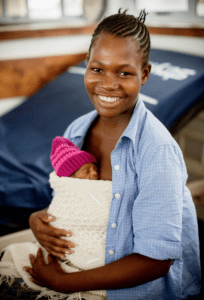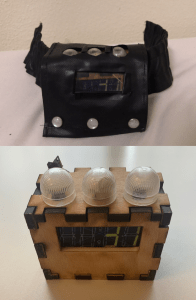The last couple of months have been busy with preparations. We have attended multiple orientation sessions, signed documents for our program coordinators, booked flights, made appointments to get vaccinations, and started preparing different technologies to take with us to Malawi to get feedback on. I don’t think our to-do list will be getting shorter any time soon, but with the school year ending I’m glad to have so many things keeping me occupied and excited for the summer.
In less than a month, Alex, Hannah, Kyla, Liseth, Sally, Shadé, and I will all be stepping out of a plane and setting foot in the warm heart of Africa: Blantyre, Malawi. The nerves haven’t really kicked in for me yet, I just feel so full of gratitude and excitement for this amazing opportunity and I can’t wait for us to begin our adventures in Malawi.
Right now, we are all working hard in Rice’s Oshman Engineering Design Kitchen (OEDK) to make sure all our technologies are ready in time for us to travel. It’s been really fun and we’re all so surprised at how much we are learning so quickly. In the last week alone, I’ve learned how to use Adobe Illustrator, use a 3-D printer, use a laser cutter, design Printed Circuit Boards (PCB), and use a PCB milling machine. Of course, I still have a lot to learn, but getting to work hands-on on these projects has been so rewarding and soon we will have 8 different technologies ready to take with us:
- Mechanism to Lock IV Drip Rate
- Reusable Phototherapy Masks
- Automatic Bleach Sterilization Equipment
- Cervical Cancer Thermocoagulation Model
- Neonatal Temperature Monitor For Kangaroo Mother Care
- Low-Cost Oxygen Concentration Monitor
- Low-Cost, Reusable Ostomy Bags
- Ballard Score Gestational Age Training Model
Since there are 7 interns and 8 projects, we decided to split up the work among ourselves. I am in charge of the Neonatal Temperature Monitor for Kangaroo Mother Care. I actually started working on this project during the spring semester in my GLHT 360 class, so I’m pretty attached and super excited to get to take it to Malawi for feedback this summer.

Usually, in developed nations like the United States, hypothermic babies can be treated quite easily and effectively with incubators. However, in low-resource countries like Malawi, incubators are often too expensive and too difficult to maintain. Instead, a much more cost-effective practice known as Kangaroo Mother Care (KMC) is used to treat hypothermia. As shown in the photo on the left, KMC is when the mother wraps her baby to her chest with a cloth, known as a chitenge in Malawi, in order to keep the baby warm. With the baby being in close proximity to the mother, the mother’s body warmth is able to regulate the baby’s temperature. It’s pretty effective in keeping the baby at a safe temperature, but it is still really important to have an accurate and continuous monitor that can keep track of the baby’s temperature while KMC is being performed.

The main purpose of our device is to continuously monitor the temperature of neonates, who may be premature and hypothermic, and promptly alert mothers and nurses when the baby’s temperature is too low. All this, while also being small and portable so that the mother can comfortably wear the device on her during KMC. To accomplish this, we designed a device with a control unit that has 3 LED indicators to alert mothers and nurses (blue if the temperature is too low, red if the temperature is too high, and green if the temperature is safe). The control unit also has a vibrational motor inside it which will vibrate, much like a mobile phone, to alert mothers and nurses when the baby’s temperature is either too low or too high. Finally, the control unit has a display screen to show the numeric value of the baby’s temperature. This control unit is placed in a pouch on an arm band that can be worn on the mother’s upper arm. The baby will wear a small, elastic belt around their abdomen, with a temperature probe attached that touches their skin to measure their core temperature. This temperature probe is plugged in to the control unit to continuously display the baby’s temperature reading.
Over the next few weeks, we will be finishing up all our prototypes, packing them in suitcases, and praying that they reach Malawi in one piece *fingers crossed*. Some of us are also going to Passport Health soon to get our yellow fever and typhoid vaccinations together, yay for bonding but hopefully I don’t pass out… I’ll keep you updated. I’ll probably be spending a lot of time trying to learn some common phrases in Chichewa (the local language), and watching YouTube tutorials + reading WikiHow posts on how to do grown-up things like washing my clothes by hand and cooking for myself for a whole summer. I can already tell this summer is going to be full of new experiences, and I’m so excited to share everything I learn with you. Next stop –> Malawi!!
— Nimisha 🙂